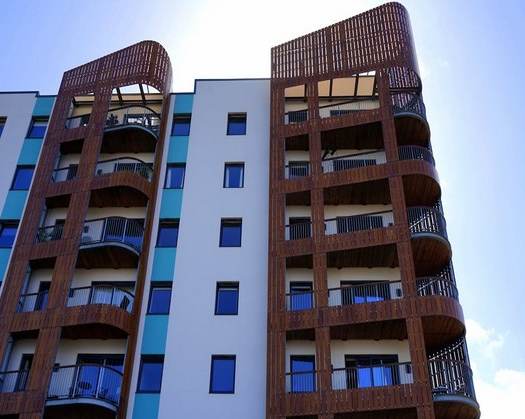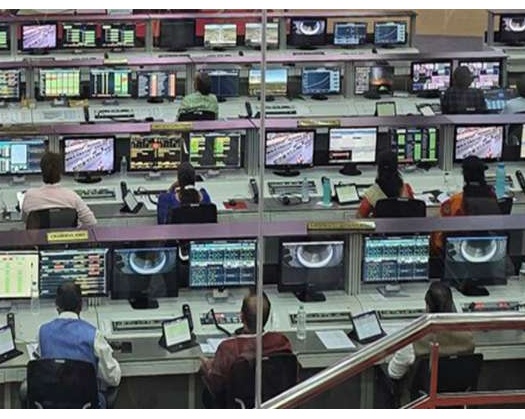New Delhi: The average housing prices across the leading eight Indian cities experienced a quarterly growth rate of 3 percent in the second quarter of 2024, marking the 14th consecutive quarter of positive growth and an indication of an optimistic sentiment among homebuyers, according to a collaborative report by the Centre for Real Estate and Development Analysis (CREDAI), Colliers International, and Liases Foras.
The report indicates that on a yearly basis, the average housing prices in India have risen by 12 percent, reaching Rs 10,804 per square foot in the second quarter of 2024.
Out of the eight cities under review, seven have seen an increase in housing prices on an annual basis. Delhi-NCR stands out with a 30 percent annual increase in housing prices, followed by Bengaluru at 28 percent, Ahmedabad and Pune at 13 percent each, Hyderabad with a 7 percent increase, and Kolkata and Mumbai Metropolitan Region (MMR) at 6 percent each. Housing prices in Chennai have remained unchanged.
Badal Yagnik, the Chief Executive Officer of Colliers International India, noted that the forthcoming festive season is expected to further elevate housing prices.
"It is noteworthy that the average housing prices have consistently shown a double-digit annual growth rate (12 percent in the second quarter of 2024), contributing to the ongoing narrative of robust growth in the residential real estate sector. Moreover, the upcoming festive season is anticipated to further stimulate the housing market with increased sales and new launches, leading us to expect a robust conclusion to the housing market in 2024," stated Yagnik.
Boman Irani, the President of CREDAI National, highlighted a shift in consumer preferences towards real estate as a preferred asset class.
"Indian Real Estate has been experiencing a period of sustained growth in recent quarters, evidenced by the volume of transactions across the Top 8 cities and the prevailing positive sentiments towards housing. This has had a direct impact on housing prices, reflecting not only the underlying demand but also a definitive shift towards real estate as a preferred asset class," said Irani.
Annually, the range of unsold inventories remained consistent, albeit continuing to experience a downward trend. Out of the eight cities under examination in this report, a sequential decrease in unsold inventories was observed in five of them. Pune experienced the most significant decline in unsold inventories, recording a 13 percent reduction, followed by Ahmedabad and Chennai, both witnessing a 7-8 percent decrease.
When analyzing city-wise growth, it was noted that housing prices in the Delhi NCR region surged by 30 percent year over year. The average price increase was particularly notable in Dwarka Expressway and Greater Noida, reaching 69 percent and 45 percent, respectively. Concurrently, the region saw a decline in unsold inventory for the sixth consecutive quarter.
In Bengaluru, housing prices experienced a 28 percent year-over-year surge, primarily driven by the luxury segment. The periphery and outer eastern micro markets saw the highest price increases, at 45 percent. Additionally, the region witnessed a decline in unsold inventory for the sixth consecutive quarter.
Ahmedabad also experienced a 13 percent increase in housing prices, attributed to sustained demand momentum. The city central west and eastern suburbs micro markets recorded the highest price increases, at 16 and 14 percent, respectively. Unsold inventory in Ahmedabad also saw a decline of 8 percent.
Pune observed a 13 percent increase in housing prices, coinciding with a significant 13 percent decrease in unsold inventories. The city also experienced a notable increase in the prices of 2-3 BHK apartments, with an annual hike of 11-12 percent.
In Hyderabad, housing prices saw an annual increase of 7 percent, with ready-to-move-in units experiencing a 21 percent price increase. Despite this, demand continued to rise, leading to a further decline in unsold inventory.
Hyderabad also saw a modest increase of 7 percent in housing prices, with ready-to-move-in units experiencing a 21 percent increase. The city of Hyderabad also witnessed a decline in unsold inventory.
MMR and Kolkata reported a modest 6 percent annual growth in housing prices. The city of Panvel in New Mumbai saw a notable increase of 16 percent per year in housing prices. Similarly, units in east Kolkata experienced a 17 percent increase in prices. Unsold inventory in both MMR and Kolkata also saw a decline.
Chennai stands out as the sole city among the top eight where housing prices remained stable over the years. Despite this stability, the city experienced a sharp decline in unsold inventory, attributed to a pick-up in new launches.









